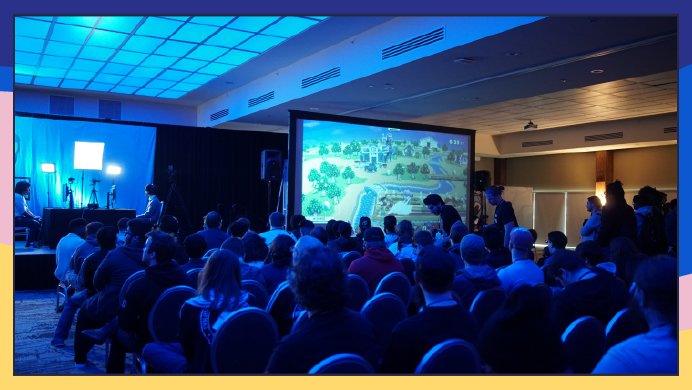In Steven Presfield’s classic on writing Do the Work he recommends you put a post-it note on your computer that reads “What’s the theme?”. As we look to create compelling training videos, what would you put on your trusty laptop to keep you on track and heading for success?
I’d suggest that the most important post-it for creating training videos would read, “What’s the point?” If you can’t answer this fundamental question then your audience will more than likely be thinking that the answer might be, “to waste my time.” Why a video? Why an animation? Would a reference card work better? Is it a standalone video to motivate team members to support a company initiative? Is it one of many short videos explaining a complicated process? Whatever the answer, don’t move forward unless you have a clear vision nailed down. Below is a brief list of other dos and don’ts that will help you create training videos and animations that will lead to successful learning outcomes.
Do decide on animation, video, or a combination of the two
Though I might be tempted to say that there are no wrong answers here, the project, budget, talent, location restraints, and many other considerations will probably guide you toward either video, animation, or a mix of the two. A short, down and dirty, handheld video could be exactly what you need. It’s immediate, authentic, and makes the audience feel part of the action. In many cases, though, animation can be a more powerful, flexible, and timeless option. If you need a pig to fly, animation is the clear choice.
Do have a target audience
Knowing your audience and creating accordingly is perhaps second only to “What’s the point?” in importance. What’s your demographic? Are they engineers? Are they artsy, creative types? These are the types of questions you should be asking about your target audience. Even if your audience is an entire company, getting as clear a picture as possible about the make-up of that population will help you create a video that best suits both the company culture and the expectations of your employees. Tailoring the content to your audience is one of the best ways to ensure your videos hit the mark in terms of authenticity.
Do tell a story whenever possible
Stories are such an important part of how we relate to the world that we might as well be known as homo narrativous. Entire treatises have been written on this subject, so I won’t belabor the point, other than to say that you should be telling stories whenever you see an opportunity. Beyond this basic precept, there are some things you can do to make your stories resonate. Start with asking what kind of emotion you’re trying to elicit from the audience. Emotion is one of the legs the stool of narrative stands on. Human beings almost never make decisions or effect behavioral change without an emotional factor in play. This is particularly important to keep in mind if your video/animation is a call to action. Story structure should also be a focus, the classic beginning, middle, end being a reliable winner. You can be creative with structure, but don’t lose sight of it. And don’t forget to vary the tone as the story moves along. Breathless excitement is great, but sustaining it over an entire storyline (in the context of a training video) might be exhausting for viewers.
Do have a script
If you’re an expert in your domain, both knowledgeable and confident of the subject matter, you might think it unnecessary to prepare either a basic storyboard or a script. You know all about this topic, right? You have years of experience and talk about this every day. Why plan it out? This is an excellent way to waste time and money on what will probably result in a very poor video. Take the time to write a script and prepare a storyboard. Walking through each scene of your video/animation will help you sharpen your message and zero in on important points.
Do show, don’t tell
Do you recall the expression, “Do what I say, not what I do?” If you’ve ever had a teenager in the house, you know it’s not the most effective parenting strategy. You can talk until you’re blue in the face, but unless you’re modelling positive behaviors, you’re probably not going to achieve the results you’re looking for. Video and animation are excellent tools in this respect. They can eliminate much of the “tell” (endless PPT slides with bulleted lists, anyone?) and take you straight to the “show”, allowing learners to absorb, re-watch if necessary, perform a task along with the video/animation. As visual and auditory mediums, video and animation are uniquely suited to the “show” aspect of learning. The success of instructional YouTube videos is a great example.
Do use music
Music is the simplest and most profound means of communicating emotion. Don’t diminish your content by choosing something that’s wildly inappropriate. This is another selection you need to make with your target audience in mind. Be thoughtful about choosing between instrumental music and a theme song that might fit your message. Step out of your comfort zone and try to find music that hasn’t been used in lots of commercials and movies; creating new, specific associations will help the learning stick. Do ask for help if music is not your forte.
Do be authentic
Authenticity is the currency of the attention-based economy. It turns on the switch of connection with the audience. This is even more true with younger audiences. Are you speaking their language? Do you know what you’re talking about? If viewers aren’t convinced that you know who they are, what they do, and what they need, their attention is going to drift. Authenticity is key to getting your audience interested in what you have to say, and sticking around long enough to hear you say it.
In a nutshell, be clear about your purpose. Know your audience. Decide on your medium. Animation may cost a little more up front but can pay off in terms of flexibility (remember the flying pigs). Tell a story with images and music that isn’t monotone. Most importantly: be authentic. Audiences will forgive imperfection but will have little patience if they don’t believe in the sincerity of your message.







